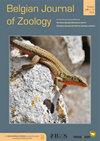Genetic diversity of ranch and feral American mink (Neovison vison Schreber, 1777) in Poland in relation to the natural population of the species
IF 1.1
4区 生物学
Q2 ZOOLOGY
引用次数: 1
Abstract
In Poland, the number of feral mink (Neovison vison) and the size of the fur-farming industry are growing. There is a concern that the gene pool of the wild living mink is being infiltrated by that of ranch animals. Three populations were analyzed: Polish ranch mink, feral animals from Poland, and, they were for the first time in Poland, compared with wild individuals from North America. The breeding history of the species and the main ways of introducing the American mink into new areas on different continents were considered. The final research included analysis of the polymorphism of 12 Mustelidae-specific microsatellite loci. It showed a similar level of genetic diversity in all the investigated populations. The research revealed the existence of geographically-specific subpopulations of feral mink in Poland, characterized by different origins, and indicated a small degree of introgression between Polish ranch and wild living populations in the past although the assignment simulation makes it clear that they are genetically distinct groups. The results are in accordance with previously reported models of colonization of Poland by this species and help to explain the influence of anthropogenic factors on the current status of this invasive species. Mixing of two separate genetic pools from the native range in Poland is a newly identified factor, shaping the genetic structure of ranch and feral populations of Neovison vison.波兰牧场和野生美国水貂的遗传多样性(Neovison vison Schreber,1777)与该物种自然种群的关系
在波兰,野生水貂的数量和毛皮养殖业的规模都在增长。有人担心野生活水貂的基因库正在被牧场动物的基因库渗透。分析了三个种群:波兰牧场水貂、来自波兰的野生动物,与北美的野生个体进行了比较,这是波兰的第一次。考虑了该物种的繁殖历史以及将美国水貂引入不同大陆新地区的主要方式。最后的研究包括分析12个鼬科特异性微卫星位点的多态性。在所有被调查的种群中,它显示出相似的遗传多样性水平。这项研究揭示了波兰野生水貂在地理上存在特定的亚群,其特征是起源不同,并表明过去波兰牧场和野生水貂种群之间存在一定程度的渗入,尽管分配模拟表明它们在基因上是不同的群体。这些结果与之前报道的该物种在波兰定居的模型一致,有助于解释人为因素对该入侵物种现状的影响。来自波兰本土的两个独立的基因库的混合是一个新发现的因素,它塑造了新视觉视觉的牧场和野生种群的遗传结构。
本文章由计算机程序翻译,如有差异,请以英文原文为准。
求助全文
约1分钟内获得全文
求助全文
来源期刊

Belgian Journal of Zoology
生物-动物学
CiteScore
1.90
自引率
0.00%
发文量
10
审稿时长
>12 weeks
期刊介绍:
The Belgian Journal of Zoology is an open access journal publishing high-quality research papers in English that are original, of broad interest and hypothesis-driven. Manuscripts on all aspects of zoology are considered, including anatomy, behaviour, developmental biology, ecology, evolution, genetics, genomics and physiology. Manuscripts on veterinary topics are outside of the journal’s scope. The Belgian Journal of Zoology also welcomes reviews, especially from complex or poorly understood research fields in zoology. The Belgian Journal of Zoology does no longer publish purely taxonomic papers. Surveys and reports on novel or invasive animal species for Belgium are considered only if sufficient new biological or biogeographic information is included.
 求助内容:
求助内容: 应助结果提醒方式:
应助结果提醒方式:


